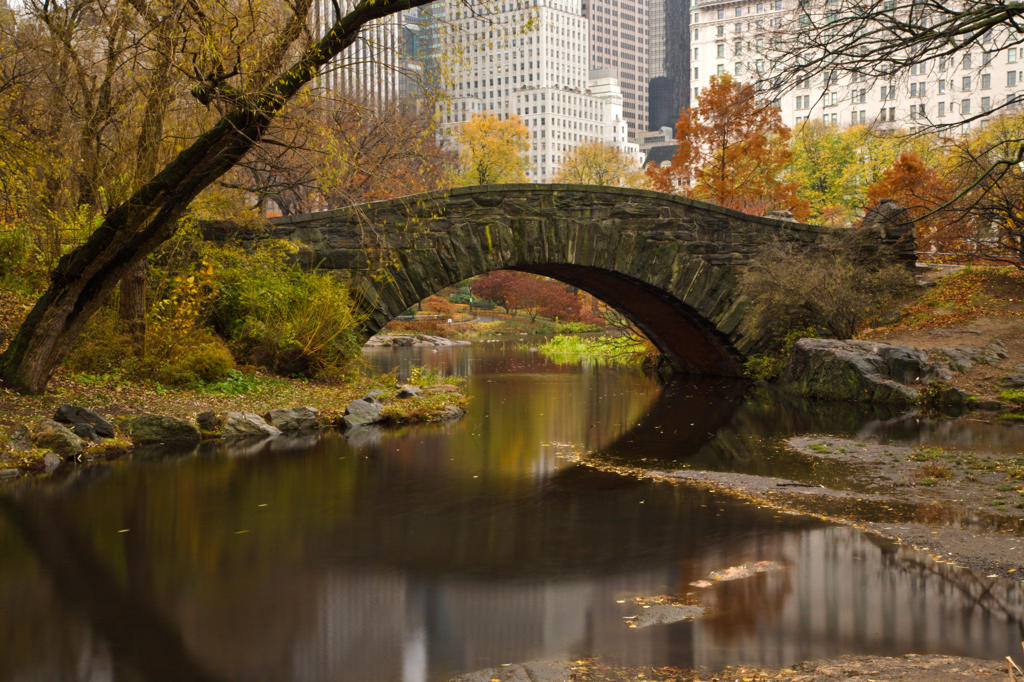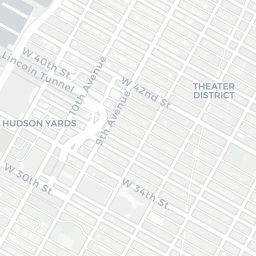About Gapstow Bridge
The graceful curve of Gapstow Bridge stretches over the calm waters of the Pond, framed by the towering skyline of Manhattan. Built from rough-hewn Manhattan schist, the bridge blends seamlessly with the natural surroundings of Central Park. Its asymmetrical arch reflects in the water below, creating a perfect mirror image. Ivy and moss cling to the stones, softening the structure and giving it a timeless, almost storybook quality.
Originally constructed in 1874 as a wooden structure, the bridge was redesigned in 1896 by Howard & Caudwell using stone to ensure durability. It has since become one of Central Park’s most iconic landmarks, connecting the bustling city to the tranquility of nature. The bridge’s design reflects the park’s philosophy of creating harmony between urban life and the natural world.
A Gateway to Nature
Gapstow Bridge serves as a passage between the manicured paths of Central Park and the wild beauty of the Pond. From the bridge, visitors can see ducks gliding across the water and turtles basking on the rocks. The surrounding trees, which change with the seasons, frame the view with vibrant greens in summer, fiery reds and oranges in autumn, and a serene, snow-covered stillness in winter. The bridge invites visitors to pause and take in the contrast between the natural and the man-made.
Plan your perfect trip to New York with Travo! Download now and start exploring.
Marks of Time
The stones of the bridge bear the marks of over a century of history. The weathered surface tells a story of countless footsteps, from 19th-century horse-drawn carriages to modern-day joggers and tourists. The bridge has witnessed the evolution of New York City, standing as a quiet observer of the city’s growth and change. Its enduring presence reminds visitors of the park’s role as a refuge from the city’s fast pace.
Artistic and Architectural Harmony
The design of Gapstow Bridge reflects the principles of the park’s creators, Frederick Law Olmsted and Calvert Vaux. The use of Manhattan schist, a native stone, ties the bridge to its surroundings, while its low, sweeping arch complements the natural contours of the landscape. The bridge’s simplicity allows it to blend into the scenery, enhancing the beauty of the park without overpowering it. This balance between art and nature is a hallmark of Central Park’s design.
Details That Speak
Notice the uneven texture of the stones, carefully arranged to create a sense of rugged elegance. The ivy creeping over the edges adds a touch of softness, while the reflection in the Pond doubles the bridge’s beauty. The nearby benches offer a perfect spot to sit and admire the interplay of light and shadow on the water. These small details invite visitors to slow down and appreciate the craftsmanship and thought that went into creating this serene space.
Present-Day Significance
Today, Gapstow Bridge is a favorite spot for photographers, couples, and anyone seeking a moment of peace in the heart of Manhattan. It serves as a backdrop for countless wedding photos and film scenes, symbolizing romance and tranquility. The bridge continues to connect people—not just across the Pond, but to the enduring vision of Central Park as a place where nature and city life coexist in harmony.

Location
Inscope Arch, 10153, New York





